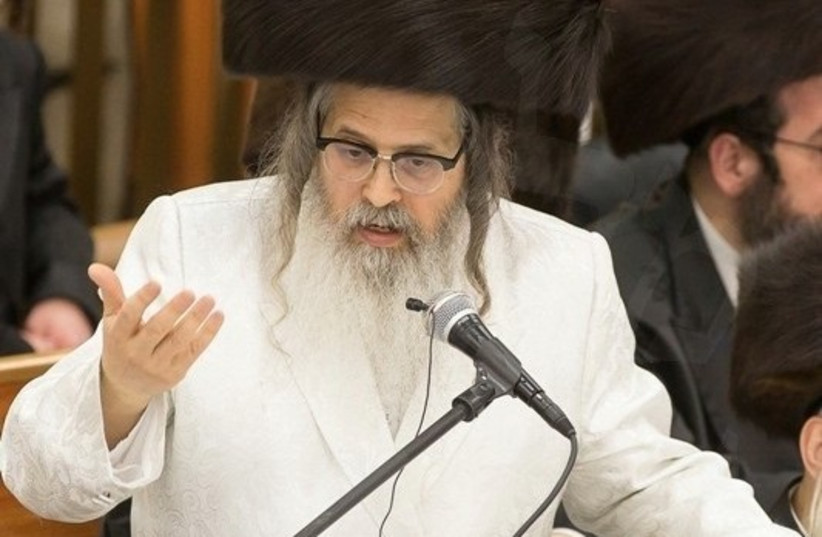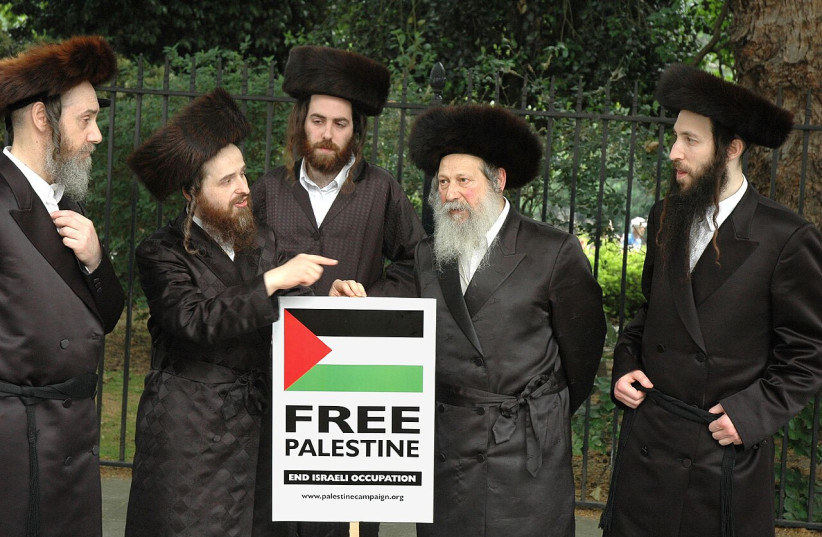Dear Secretary of State, Antony Blinken,
Eight days after the
October 7th Hamas massacre, you met with Egyptian President Abdel Fatah
el-Sisi. During the course of this meeting, he stated:
“You said
that you are a Jewish person and I am an Egyptian person who grew up
next to Jews in Egypt. They have never been subjected to any form of
oppression or targeting and it has never happened in our region that
Jews were targeted in recent or old history.”
You appeared taken aback by his statement and did not counter its veracity, merely responding with “I come as a human being.”
Unfortunately,
el-Sisi was propagating an old myth. Indeed, there were periods of
fruitful Muslim-Jewish coexistence - the most impressive being the
so-called Spanish Golden Age, which tragically ended with the massacre
of approximately 4,000 Jews in Granada in 1066 - but to ignore the
long-history of “oppression” and “targeting” is a vile form of
revisionist history. Notably, this revisionist history is also
propagated by the Hamas charter itself (Article 31).
To counter
El-Sisi’s claim, let me start with a quote from Maimonides, who,
ironically enough, wrote the following from Egypt in 1173:
“Remember,
my co-religionists, that on account of the vast number of our sins, God
has hurled us in the midst of this people, the nation of Ishmael, who
have persecuted us severely, and passed baneful and discriminatory
legislation against us… Never did a nation molest, degrade, debase and
hate us as much as they…All this notwithstanding, we do not escape this
continued maltreatment which well nigh crushes us. No matter how much we
suffer and elect to remain at peace with them, they stir up strife and
sedition.” (Epistle to Yemen).
Muslim killings of civilian Jews from 622-2023:
I
have surveyed the available historical record of Muslim killings of
civilian Jews from 622-2023. I have identified over 90 incidents between
622-1896, which was prior to the First Zionist Congress, an additional
30 incidents between 1897-1947, prior to the establishment of the State
of Israel, and 37 incidents between 1948-1966, prior to the so-called
“occupation” of Judea, Samaria and Gaza. These fatal attacks throughout
the generations have occurred in over 30 countries.
Notably,
this tally does not include attempted killings, brutal woundings,
rapes, lootings, forced conversions, Dhimmi-status religious
discrimination and financial oppression, and numerous expulsions. For
example, regarding attempted killings, while there were over 400 terrorist
attacks by Muslims against Jewish civilians, in over 40 different
countries (not including Israel), from the year 1968-2003, most did not
result in deaths. Similarly, there have been over 1,500 terrorist attacks in Israel from 1948-2023, with many “merely” wounding civilians and not resulting in deaths.
Yet,
numbers do not tell the story of these brutal and savage attacks. To
give you a glimpse into the horror, below are four accounts of
massacres.
In a letter from 1884, J. Matalon described the massacre in the small-town of Demnat, Morocco:
“Within
the last hour, a letter has come from Demnat saying that, following the
Governer’s receipt of a letter from the Sultan, he has redoubled his
cruelty. Shops have been looted, the doors of houses battered in, women
raped, children butchered, the Chief Rabbi Joseph Elmaleh, an old man
over 80, has been beaten to death by the Governor. In fact, the only men
left in Demnat are in prison, all the rest have fled.” (Quoted in Jews
under Muslim Rule in the late Nineteenth Century, David Littman, p. 73).
Sir Martin Gilbert, the esteemed historian, described the blood libel of Shiraz, Iran, in 1910:
“On
21 May 1910, four years after equality of religious worship was
established in Persia, Jews in the city of Shiraz were confronted with
an outburst of anti-Jewish sentiment that was harsh even by the
standards of the time. An eyewitness, Nissani Macchallah, a young Jewish
teacher at the Alliance school, saw a sayyid - a Muslim dignitary -
beating two elderly Jewish men with chains. When he intervened and
remonstrated with the sayyid, the Muslim stabbed Macchallah to death.
"As
a result of protests from the European Powers, the sayyid was sentenced
to three months in prison, and an order was promulgated that called for
respect for Jewish lives. To avenge the sayyid’s imprisonment, his
followers falsely accused the Jews of killing a young Muslim girl near
the Jewish cemetery. They also arranged for copies of the Koran to be
thrown into the sewage of the Jewish Quarter in an attempt to provoke an
anti-Jewish riot.
"On 31 October 1910 the director of the
Alliance School in Shiraz, Tunisian-born Elie Nataf, sent a full account
of what followed to his head office in Paris. A ‘frenzied mob’ headed
for the Jewish Quarter, he wrote. It arrived at the same time as the
soldiers who had been sent by the military governor to protect the Jews.
But, ‘as if they were obeying orders,’ the soldiers were ‘the first to
break into the Jewish houses, thereby giving the signal to plunder.’
Nataf continued: ‘The carnage and destruction which then occurred for
six to seven hours is beyond the capacity of any pen to describe.’...Not
one of the 260 houses in the Jewish Quarter was spared…The mob - these
‘fanatics’ - then turned against the Jews themselves…twelve Jews were
killed and fifteen seriously injured…
"The riot was a devastating
blow to the Jewish community. Five or six thousand Jews had lost
everything…This occurred in the same decade as the pogroms in the
Christian empire of the Russian Tsars - pogroms that were similar in so
many of their details, and that were sending millions of Jews to seek
refuge in the United States, Canada and Western Europe. ” (In Ishmael’s
House, pp. 129-131).
Describing the pogrom of Safed, British Palestine, in 1929, David Hacohen writes:
"We
set out on Saturday morning. … I could not believe my eyes. … I met
some of the town's Jewish elders, who fell on my neck weeping bitterly.
We went down alleys and steps to the old town. Inside the houses I saw
the mutilated and burned bodies of the victims of the massacre, and the
burned body of a woman tied to the grille of a window. Going from house
to house, I counted ten bodies that had not yet been collected. I saw
the destruction and the signs of fire. Even in my grimmest thoughts I
had not imagined that this was how I would find Safed where "calm
prevailed."
The local Jews gave me a detailed description of how
the tragedy had started. The pogrom began on the afternoon of Thursday,
August 29, and was carried out by Arabs from Safed and from the nearby
villages, armed with weapons and tins of kerosene. Advancing on the
street of the Sefardi Jews from Kfar Meron and Ein Zeitim, they looted
and set fire to houses, urging each other on to continue with the
killing. They slaughtered the schoolteacher, Aphriat, together with his
wife and mother, and cut the lawyer, Toledano, to pieces with their
knives.
Bursting into the orphanages, they smashed the children's
heads and cut off their hands. I myself saw the victims. Yitshak Mammon,
a native of Safed who lived with an Arab family, was murdered with
indescribable brutality: he was stabbed again and again, until his body
became a bloody sieve, and then he was trampled to death. Throughout the
whole pogrom the police did not fire a single shot.” (Quoted from Time
to Tell: An Israeli Life, 1898-1984, by David Hacohen)
Finally, the infamous “Farhud” of Bagdad in 1941:
This is where the the evils of Nazism met Muslim anti-Semitism, and an estimated 180-600 Jews were killed:
“Bands
of enemies were wandering inside the Jewish quarters and were killing
and looting. Such events lasted until midnight, and many were killed.
Heads of children were cut off like sheep, old men were killed, while
women were disgraced…This was how the night passed. In the morning the
Jews did not know what had happened to their brothers during the night,
and they went out for work as usual, but it was only a short interval
given by the killers, after which they resumed their terrorism under the
management of policemen and ex-soldiers.
"They began at 9:30
a.m., completing their program of the night before...Killing and looting
lasted until 11 a.m. that day…Bodies of the dead were thrown on
pavements on both sides of the street…Every Jewish home sustained the
loss of one of its members, or it had at least had one of them wounded.
The remaining people lived in terror.” (Quoted in The Legacy of Islamic
Antisemitism, by AG Bostom, p. 663-664).
Unfortunately, these
accounts are chillingly similar to what occurred on October 7th, 2023.
Hamas’s hideous massacre is part of a long history of Muslim
antisemitism and terrorism that goes back centuries.
Secretary
Blinken, next time you see el-Sisi, please do not be afraid or ashamed
to “come as a Jew” and correct him on his revisionist history.
http://www.israelnationalnews.com/news/380535?utm_source=activetrail&utm_medium=email&utm_campaign=nl

























